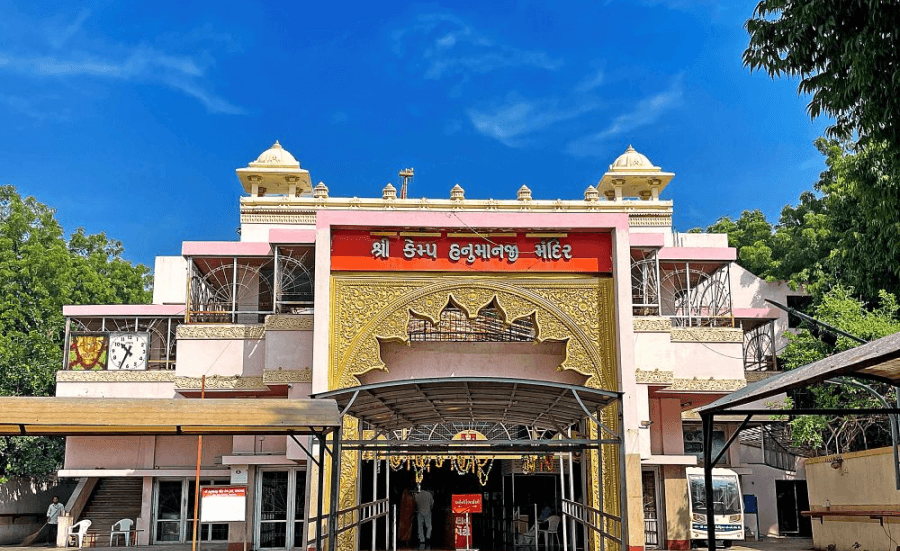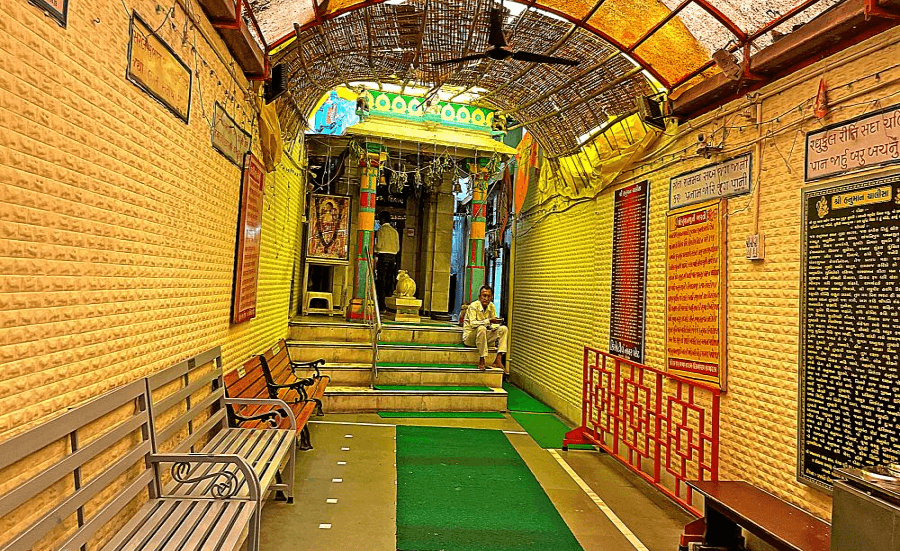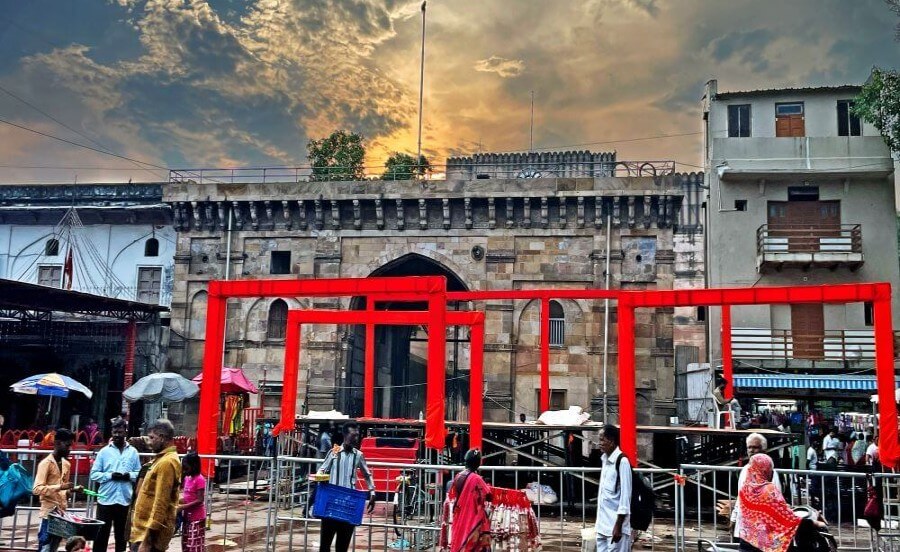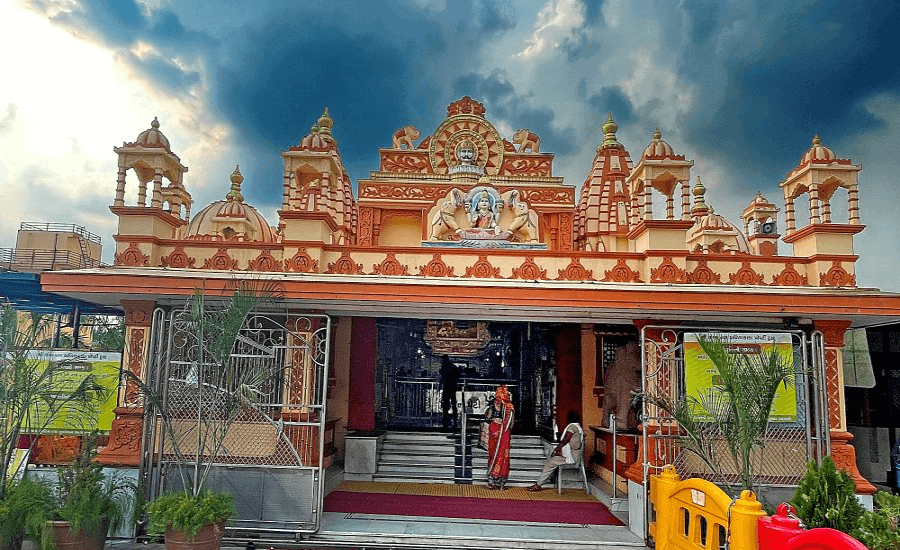

The Hanuman Temple in Shahibaug, Ahmedabad, is considered one of the largest Hanuman temples in India. Since it is located in a military cantonment area, it is known as Camp Hanuman Temple. This temple is over a hundred years old, and the Hanuman idol here is believed to be swayambhu (self-manifested). Camp Hanuman is a significant place of devotion, attracting not only ordinary devotees but also political leaders like Prime Minister Narendra Modi and various celebrities. Large crowds visit the temple, especially on Tuesdays and Saturdays, prompting the military to provide special security arrangements.
The temple’s history dates back to the British era. It is said that more than a hundred years ago, a Hanuman devotee named Pandit Gajanan Prasad established the temple. At that time, it was known as the Jamalpur Gam Hanumanji Temple. Near the Jamalpur Gate in Ahmedabad, there was the Gaekwad Haveli, and during the rule of the Peshwas and their general, Damaji Gaekwad, the city’s revenue was divided equally between them. The Peshwas controlled 11 of the city’s gates, while the Jamalpur Gate was under the Gaekwads. In 1817, the East India Company took control of the city. The British used the haveli as a military cantonment, and a Hanuman temple stood nearby.
In 1817, the East India Company took control of the city. The British used the haveli as a military cantonment, and a Hanuman temple stood nearby.
However, the temple became an inconvenience for the British, who suggested relocating it. The British demolished four nearby sarais (inns) and some small temples. According to legend, when they tried to demolish the Hanuman temple, millions of black and yellow wasps suddenly appeared and protected the temple by covering its walls. These wasps only attacked the labourers trying to demolish the temple, and after eight days of this miraculous protection, the British officers were forced to abandon their plan.
Today, the temple stands within the Indian Army’s cantonment area in Shahibaug. After passing through the secure military entrance, the temple complex comes into view. The three-story temple has a large courtyard in front, with separate queue arrangements for devotees on both sides, shaded by metal roofs for comfort. The temple’s entrance is two stories high, with an arch-shaped golden gate decorated with intricate carvings. The temple consists of a spacious hall (sabhamandap) and a sanctum (garbhagriha).
The hall is enclosed and very spacious, with a steel-railed path for orderly darshan. A portion of the ceiling is circular and open, with its edges adorned with floral designs. The ceiling of the front part of the hall is flat, featuring engraved chandeliers. The walls of the hall display beautiful three-dimensional depictions of scenes from the Ramayana.
The ceiling of the front part of the hall is flat, featuring engraved chandeliers. The walls of the hall display beautiful three-dimensional depictions of scenes from the Ramayana.
The sanctum has intricately carved pillars and a domed ceiling. The walls are covered with silver panels featuring carvings of a mace (gada), sacred pots, and floral designs, with “Sita Ram” inscribed on them. A large relief depicts Ram, Lakshman, and Sita, with Hanuman bowing before them. The sanctum also houses idols of Ganesh and Shri Ram. The main Hanuman idol, made of stone and covered in gold plating, is placed on a high pedestal. Every Purnima (full moon), the idol is bathed in oil, followed by a shendur (vermillion) coating. Afterward, the idol is adorned with silver and gold coverings.
Hanuman is depicted with his left hand raised near his head and a golden ring in his right hand near his chest, symbolising the ring given by Lord Ram when Hanuman went to search for Sita in Lanka. The chest of the idol is inscribed with “Shri Ram” in large letters, and silver gada flank both sides of the idol.
A circumambulatory path (pradakshina marg) around the sanctum allows devotees to pay respects to various deities, including Vayudev, Anjanimata, Ram, Lakshman, Sita, Lakshmi, Ganesh, and Bhairav.  These idols are beautifully carved and placed in niches along the outer wall.
These idols are beautifully carved and placed in niches along the outer wall.
The temple roof is crowned with domes, umbrellas and spires in the Gurjar architectural style. The temple’s flag is changed every full moon. Special decorations are done for Hanuman on Tuesdays and Saturdays, drawing huge crowds of devotees. The temple celebrates Ram Navami and Hanuman Jayanti with great fervour, and on Hanuman Jayanti, a grand procession is taken out, with thousands participating.
On Saturdays and Tuesdays, the temple is open for darshan from 5:00 AM to 11:00 PM. On other days, darshan is available from 5:00 AM to 8:00 PM. The temple conducts aartis at 6:30 AM and 6:30 PM from Sunday to Friday. On Saturdays, the aartis are held at 5:30 AM and 5:30 PM. Packaged prasadam is also available for purchase within the temple hall.



